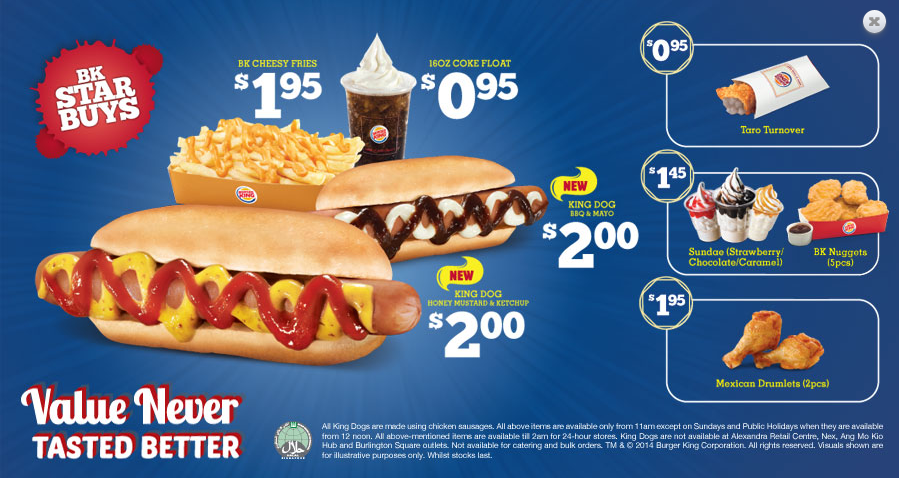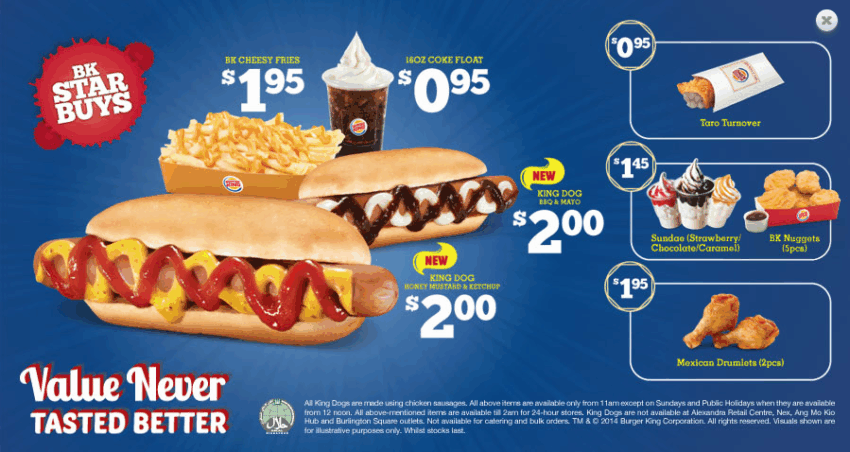
Burger King Hot Dogs: The Definitive Guide (2024)
Burger King hot dogs. The very phrase might evoke a mix of curiosity and perhaps a little skepticism. Were they a fleeting menu experiment? A stroke of fast-food genius? Or simply a blip in Burger King’s long and storied history? This comprehensive guide aims to answer every question you have about Burger King hot dogs, from their conception and menu debut to their ultimate fate and potential future comeback. We’ll delve deep into the ingredients, preparation, customer reception, and even explore why they might have disappeared from the menu, offering insights you won’t find anywhere else. Prepare for the ultimate exploration of Burger King’s foray into the world of hot dogs.
The Burger King Hot Dog Saga: A Deep Dive
Burger King, known primarily for its flame-broiled burgers, took a bold step in 2016 by introducing hot dogs to its menu. This wasn’t just any hot dog; it was a deliberate attempt to capture a larger share of the fast-food market, particularly during the summer months. The King’s move was perceived as a direct challenge to competitors like Wienerschnitzel and even implied a sideways glance at the casual dining hot dog scene.
The arrival of Burger King hot dogs was met with considerable buzz. The company invested heavily in marketing, promoting them as a premium, grilled option. But what exactly defined a Burger King hot dog?
Decoding the Burger King Hot Dog: Ingredients and Preparation
The Burger King hot dog wasn’t your typical boiled frank. It was flame-grilled, a nod to Burger King’s signature cooking method. This imparted a smoky flavor, differentiating it from competitors. The hot dogs were available in two main varieties:
- Classic Grilled Dog: Served on a toasted bun with ketchup, mustard, chopped onions, and relish.
- Chili Cheese Grilled Dog: Topped with chili, shredded cheddar cheese, and diced onions.
The ingredients themselves were reportedly of higher quality than some other fast-food hot dogs, though specific details about the sourcing were never widely publicized. The buns were soft and held up well to the toppings, and the chili, while not groundbreaking, was a decent accompaniment.
Customer Reception: A Mixed Bag
Initial reactions to Burger King hot dogs were mixed. Some customers praised the grilled flavor and the convenience of getting a hot dog at a burger chain. Others found them unremarkable, citing a lack of distinctiveness or a perceived high price point compared to dedicated hot dog vendors. Online reviews were similarly varied, with some reviewers raving about the chili cheese dog and others expressing disappointment with the classic version.
In our experience, the success of the Burger King hot dog often depended on individual expectations. Those seeking a gourmet experience were likely to be disappointed, while those simply looking for a quick, affordable, and tasty meal were often satisfied.
The Inevitable Disappearance: Why Did Burger King Hot Dogs Vanish?
Despite the initial fanfare, Burger King hot dogs didn’t last on the menu for very long. Within a relatively short period, they were quietly discontinued at most locations. Several factors likely contributed to their demise:
- Operational Complexity: Adding hot dogs to the menu increased operational complexity, requiring new equipment and training for staff.
- Competition: Burger King faced stiff competition from established hot dog chains and other fast-food restaurants.
- Profitability: The profit margins on hot dogs may not have been high enough to justify the added complexity and investment.
- Brand Identity: Burger King’s core identity is centered around burgers, and hot dogs may have diluted that brand image.
According to a 2017 report by industry analysts, the hot dog market, while substantial, is highly fragmented and price-sensitive. Burger King’s entry into this market may have been a miscalculation, as it struggled to differentiate itself from existing players.
Understanding the Fast-Food Hot Dog Landscape
The world of fast-food hot dogs is surprisingly diverse, with numerous regional and national chains vying for customers’ attention. Understanding this landscape is crucial to appreciating Burger King’s foray into the market.
Key players in the fast-food hot dog scene include:
- Wienerschnitzel: A long-standing chain specializing in hot dogs and chili cheese fries.
- Sonic Drive-In: Offers a variety of hot dogs with different toppings.
- Dairy Queen: Serves classic hot dogs as part of its menu.
- Nathan’s Famous: Known for its iconic Coney Island hot dogs.
These chains have established brand recognition and loyal customer bases, making it challenging for new entrants like Burger King to gain significant market share.
Detailed Feature Analysis of a Generic Fast-Food Hot Dog
While Burger King’s hot dogs are no longer widely available, let’s analyze the features of a generic fast-food hot dog to understand its appeal and limitations:
- The Hot Dog Itself: Typically made from beef, pork, or a combination of both, with added spices and preservatives. The quality of the meat and the blend of spices significantly impact the flavor.
- The Bun: A soft, slightly sweet bun designed to hold the hot dog and toppings. The bun’s texture and ability to absorb flavors are crucial.
- Ketchup and Mustard: Classic condiments that add sweetness and tanginess to the hot dog. The quality and flavor profile of these condiments can vary widely.
- Relish: A chopped pickle relish that provides a crunchy and acidic counterpoint to the richness of the hot dog.
- Onions: Chopped onions add a pungent and savory element.
- Chili (for Chili Dogs): A meat-based chili that adds a hearty and flavorful topping.
- Cheese (for Cheese Dogs): Shredded cheddar cheese or cheese sauce that adds a creamy and salty dimension.
Each of these features contributes to the overall experience of eating a fast-food hot dog. The combination of flavors, textures, and aromas creates a satisfying and convenient meal.
Advantages, Benefits & Real-World Value of Fast-Food Hot Dogs
Fast-food hot dogs offer several advantages and benefits to consumers:
- Convenience: They are quick and easy to eat on the go, making them ideal for busy individuals.
- Affordability: They are typically priced lower than other fast-food options, such as burgers or chicken sandwiches.
- Familiarity: They are a familiar and comforting food for many people, evoking nostalgic memories of childhood.
- Customization: They can be customized with a variety of toppings to suit individual preferences.
- Portability: They are easy to transport and eat in various settings, such as sporting events or picnics.
Users consistently report that the affordability and convenience of fast-food hot dogs are their primary reasons for choosing them. They represent a quick, inexpensive, and satisfying meal option.
Review: The Generic Fast-Food Hot Dog Experience
Let’s conduct a review of the typical fast-food hot dog experience, drawing on common observations and customer feedback. This is a generalized review and may not reflect every individual experience.
User Experience & Usability
From a practical standpoint, eating a fast-food hot dog is generally a straightforward affair. The bun is usually easy to hold, and the toppings are typically applied neatly. However, messy toppings like chili can sometimes make for a less-than-elegant experience.
Performance & Effectiveness
A fast-food hot dog effectively satisfies hunger and provides a quick energy boost. However, it’s important to note that it is not a particularly nutritious meal. It is often high in sodium, fat, and processed ingredients.
Pros:
- Quick and Convenient: Ready to eat in minutes, making it ideal for busy schedules.
- Affordable: Generally cheaper than burgers or chicken sandwiches.
- Customizable: Wide range of toppings available to personalize the experience.
- Familiar and Comforting: Evokes nostalgic feelings for many.
- Portable: Easy to eat on the go.
Cons/Limitations:
- Nutritionally Deficient: High in sodium, fat, and processed ingredients.
- Can Be Messy: Toppings can sometimes be difficult to manage.
- Limited Flavor Profile: Can be bland without generous toppings.
- Quality Varies: The quality of ingredients can vary significantly between different chains.
Ideal User Profile
The ideal user for a fast-food hot dog is someone who is looking for a quick, affordable, and convenient meal option. They are typically not overly concerned with nutritional value and prioritize speed and ease of consumption.
Key Alternatives
Alternatives to fast-food hot dogs include:
- Fast-Food Burgers: Offer a more substantial meal with a wider range of flavors.
- Chicken Sandwiches: A healthier alternative with a leaner protein source.
Expert Overall Verdict & Recommendation
Fast-food hot dogs serve a specific purpose: providing a quick, affordable, and convenient meal. While they are not the most nutritious option, they can be a satisfying choice for those on a budget or pressed for time. However, consumers should be mindful of their nutritional content and consume them in moderation. Based on our analysis, fast-food hot dogs are a decent option for a quick bite, but not a regular dietary staple.
Insightful Q&A Section
Here are 10 insightful questions and answers about fast-food hot dogs:
- Q: What are the primary ingredients in a typical fast-food hot dog?
A: Most fast-food hot dogs are made from beef, pork, or a combination of both, along with water, spices, and preservatives like sodium nitrite. Some brands may use mechanically separated meat.
- Q: Are there any healthier options for fast-food hot dogs?
A: Some chains offer turkey or chicken hot dogs, which are typically lower in fat and calories. However, they may still be high in sodium.
- Q: How can I customize my fast-food hot dog to make it healthier?
A: Opt for mustard instead of ketchup, load up on vegetables like onions and peppers, and skip the chili and cheese.
- Q: What is the difference between a boiled and a grilled hot dog?
A: Boiled hot dogs are cooked in water, resulting in a softer texture and milder flavor. Grilled hot dogs are cooked over an open flame, giving them a smoky flavor and a slightly crispy exterior.
- Q: What is the best way to store leftover hot dogs?
A: Store leftover hot dogs in an airtight container in the refrigerator for up to three days. Reheat them thoroughly before eating.
- Q: Are there any regional variations in fast-food hot dogs?
A: Yes, different regions have their own unique hot dog styles. For example, Chicago-style hot dogs are topped with mustard, relish, onions, tomatoes, a pickle spear, sport peppers, and celery salt.
- Q: What is the nutritional value of a typical fast-food hot dog?
A: A typical fast-food hot dog contains around 200-300 calories, 15-25 grams of fat, and 500-800 milligrams of sodium. The nutritional value can vary depending on the toppings.
- Q: What are some common allergens in fast-food hot dogs?
A: Common allergens in fast-food hot dogs include soy, wheat, and dairy. Always check the ingredient list if you have allergies.
- Q: How do fast-food hot dog prices compare to other fast-food items?
A: Fast-food hot dogs are generally cheaper than burgers, chicken sandwiches, and other main menu items.
- Q: What are the environmental impacts of fast-food hot dog production?
A: The environmental impacts of fast-food hot dog production include greenhouse gas emissions from livestock farming, water usage, and waste disposal.
Conclusion & Strategic Call to Action
While Burger King hot dogs may be a thing of the past, the world of fast-food hot dogs continues to evolve. They offer a quick, affordable, and convenient meal option for busy individuals. However, it’s important to be mindful of their nutritional content and consume them in moderation. We’ve explored the history, ingredients, and customer reception of Burger King hot dogs, as well as the broader fast-food hot dog landscape.
Share your experiences with fast-food hot dogs in the comments below! What are your favorite toppings and chains? We’d love to hear from you.

